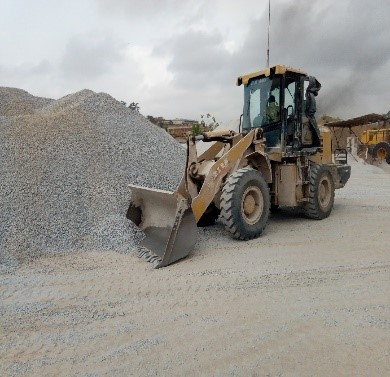Scientists at the CSIR-Building and Road Research Institute (CSIR-BRRI), Kumasi and the KNUST School of Public Health and the University of Washington, Seatle, are calling for upward readjustment of Ghana EPA permissible noise level for heavy industrial areas.
The recommendation comes at the back of research which found the ambient noise permissible limit at 70 dBA to be unrealistic.
A-weighted decibels, or “dBA,” are often used when describing sound level recommendations for healthy listening. While the dB scale is based only on sound intensity, the dBA scale is based on intensity and on how the human ear responds.
The cross sectional study, conducted in the Ashanti and Ahafo regions, was aimed at establishing the occupational noise exposure levels of carpenters and operators of concrete mixers, bulldozers, excavators, among others.
The noise measuring tool known as dosimeter was mounted on a worker’s clothing at the shoulder level to monitor the noise exposure level for each specific task executed.
They found the bulldozer produced the highest average daily noise exposure level and small steel rollers produced the least. All the nine worker groups monitored with the noise dosimeter were exposed to mean noise levels exceeding the Ghana EPA permissible limits by between 10.1dBA and 23.6dBA.
The operators of bulldozer, asphalt-producing plant, concrete mixer, pneumatic tyre roller, carpenters, pay-loader, excavator, steel roller and small steel roller were exposed to average daily personal noise exposure levels of 93.6dBA, 92.4dBA, 87.9dBA, 87.3dBA, 86.4dBA, 86.2dBA, 85.6dBA, 81.5dBA and 80.1dBA respectively.
The peak noise pressure levels from all the equipment exceeded the limits of Ghana EPA (by 50.7dBA–72.6dBA), ISO/NIOSH (by 35.7dBA–57.6 dBA) and OSHA (by 30.7dBA– 52.6dBA). The highest was recorded from the bulldozer, followed in that order by the carpenters, excavator, pneumatic tyre roller, asphalt-producing plant, pay-loader, concrete mixer, small steel roller and steel roller.
“It’s obvious from the study that the Ghana EPA permissible limits for heavy industrial areas, where road construction falls set at 70dBA during night and day is unrealistic,” said the lead researcher at the CSIR-BRRI and Occupational Hygienist, Isaac Kofi Yankson.
The scientists which included researchers from the Komfo Ankoye Teaching Hospital, University of Washington, Seattle and Ghana Health Service, however say, the recommended noise level does not pre-dispose unprotected workers to noise-induced hearing loss over an 8-hour working period.
Mr. Yankson advises owners of construction companies to provide welfare facilities such as pre-employment and in-service medical monitoring.
Latest Stories
-
Let’s live peacefully and shame our saboteurs – Savannah executives of NPP, NDC
12 mins -
Reconstruction of Agona-Nkwanta-Tarkwa road 80 per cent complete
20 mins -
Internet penetration: 10.7 million Ghanaians offline – LONDA Report
29 mins -
USC cancels grad ceremony as campus protests against Israel’s war in Gaza continue
33 mins -
Harvey Weinstein’s 2020 rape conviction overturned in New York
40 mins -
US Supreme Court divided on whether Trump can be prosecuted
42 mins -
There’s enough justification for Affirmative Action Bill to be passed – Minka-Premo
45 mins -
Don’t allow people to manipulate you into vaccine hesitancy – Dr Adipa-Adappoe
52 mins -
Suspend implementation of Planting for Food and Jobs 2.0 for 2024 – Stakeholders
58 mins -
Parkinson’s disease no longer confined to the elderly – Public Health Physician, Dr Momodou Cham warns
1 hour -
Persons living with Parkinson’s disease appeal for support as they face stigmatization
1 hour -
36-year-old-trader sentenced for stealing employer’s money
1 hour -
9 signs you’re falling in love with someone who thoroughly enjoys emotional manipulation
1 hour -
Catholic Diocese of Keta Akatsi hosts Parkinson’s support group meeting
1 hour -
Wa Naa appeals to Akufo-Addo to audit state lands in Wa
2 hours

